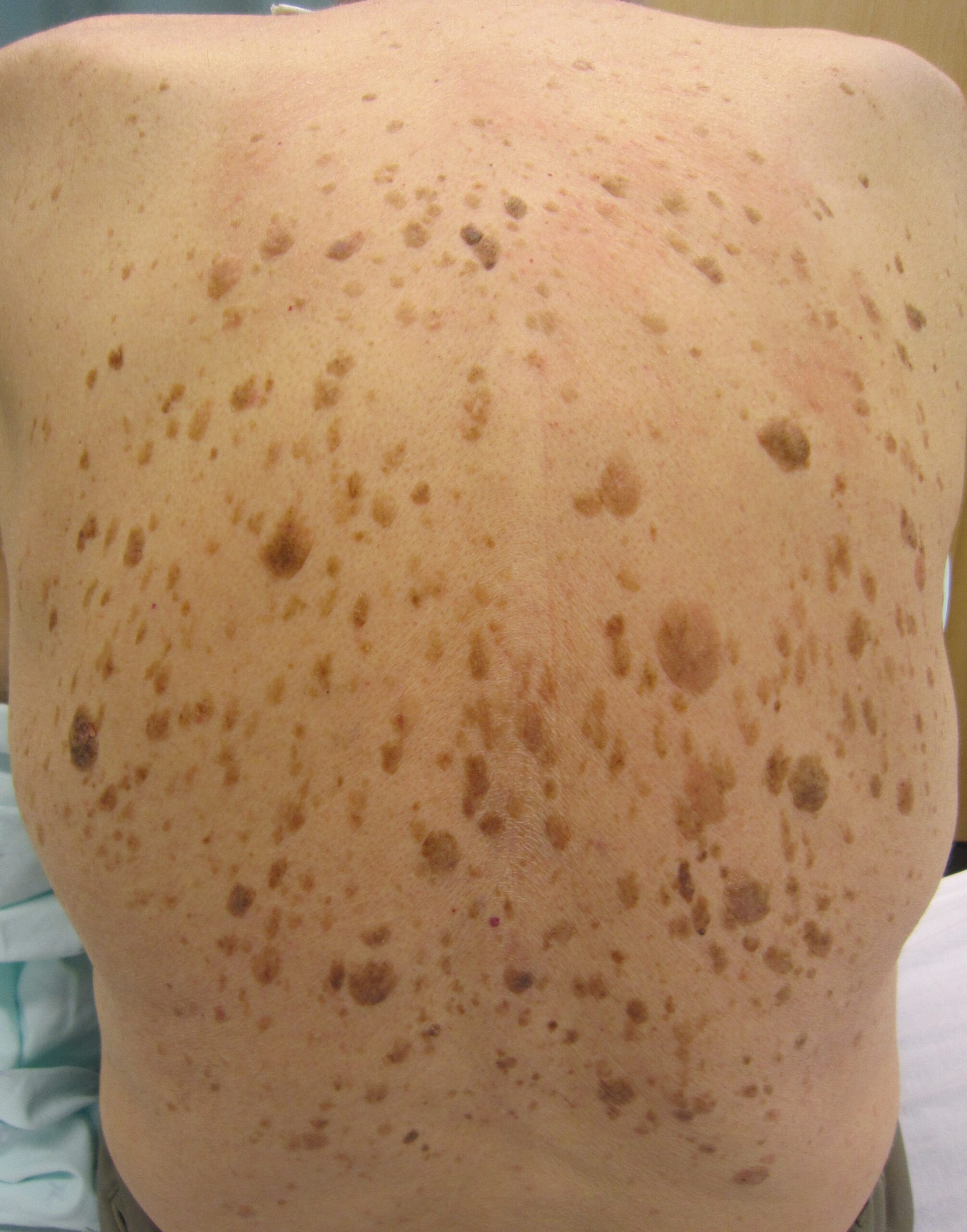What are the symptoms of seborrheic keratosis?
Seborrheic keratosis is a benign skin condition that typically presents with the following symptoms:
- Raised Lesions: Seborrheic keratoses often appear as raised, wart-like bumps on the skin. They can vary in size from small spots to larger patches.
- Color Variations: The color of seborrheic keratoses can range from light tan to dark brown or black. The color may be uneven, with darker spots or patches within the lesion.
- Rough Texture: The surface of seborrheic keratoses is usually rough or bumpy, and they may feel slightly scaly or gritty to the touch.
- Well-Defined Borders: These lesions typically have well-defined, irregular edges that contrast with the surrounding skin.
- Itching or Irritation: Some individuals may experience mild itching or irritation around the seborrheic keratosis, though this is not always the case.
- Non-Tender: Seborrheic keratoses are generally non-tender and not painful unless they become irritated or scratched.
- Varied Locations: They can appear on various parts of the body, including the trunk, face, scalp, and arms. They are commonly found on areas that are frequently exposed to the sun, though they can also occur on less exposed areas.
- Slow Growth: These lesions usually grow slowly over time and do not spread to other parts of the body. They can remain stable for years.
Seborrheic keratosis is a common skin condition, particularly in older adults, and is generally harmless. However, if you have a new or changing skin lesion, it is always a good idea to have it evaluated by a dermatologist to rule out other conditions and confirm the diagnosis.
What are the causes of seborrheic keratosis?
The exact causes of seborrheic keratosis are not entirely understood, but several factors are thought to contribute to its development:
- Aging: Seborrheic keratosis is most common in older adults. The risk of developing these lesions increases with age, suggesting that aging may play a role in their formation.
- Genetics: A family history of seborrheic keratosis can increase the likelihood of developing these lesions. Genetic predisposition is considered a significant factor in their occurrence.
- Sun Exposure: Although seborrheic keratoses can appear on any part of the body, they are often found on areas that have been exposed to the sun. This suggests that sun exposure may contribute to their development.
- Skin Type: People with certain skin types may be more prone to developing seborrheic keratoses. They are often found on individuals with fair skin but can occur in people with all skin types.
- Hormonal Changes: Some studies suggest that hormonal changes, particularly those related to estrogen, may influence the development of seborrheic keratosis, although this connection is less well understood.
- Environmental Factors: Exposure to certain environmental factors or skin irritants may contribute to the development of seborrheic keratosis. However, this connection is less clearly established.
While seborrheic keratosis is generally harmless and not related to skin cancer, if you notice any new or changing skin lesions, it’s important to have them evaluated by a dermatologist to ensure they are benign and not indicative of a more serious condition.
What is the treatment for seborrheic keratosis?
Treatment for seborrheic keratosis is typically pursued if the lesions are symptomatic, causing discomfort, or for cosmetic reasons. Various treatment options include:
- Cryotherapy: This involves freezing the seborrheic keratosis with liquid nitrogen. The lesion typically falls off within a few weeks as the frozen skin heals.
- Electrosurgery: Also known as cauterization, this method uses electric current to burn off the seborrheic keratosis. It is effective for removing the lesion and can be used on larger or more resistant growths.
- Laser Therapy: Lasers can be used to precisely target and remove seborrheic keratosis. This method minimizes damage to surrounding skin and is particularly useful for facial lesions.
- Curettage: In this procedure, a dermatologist scrapes off the seborrheic keratosis using a curette, a specialized surgical instrument. This method may be combined with cryotherapy or electrosurgery for better results.
- Topical Treatments: Certain topical medications, such as creams containing hydrogen peroxide or chemotherapy agents like 5-fluorouracil, can be used to treat seborrheic keratosis. These treatments help to remove or reduce the lesions over time.
- Shave Biopsy: In some cases, a shave biopsy may be performed to remove the seborrheic keratosis. This technique involves using a blade to shave off the lesion, often combined with electrosurgery or cryotherapy.
Treatment is generally considered when seborrheic keratosis causes symptoms like itching or bleeding, or for cosmetic reasons. For most people, seborrheic keratosis does not require treatment if it is not causing any issues. Consulting with a dermatologist can help determine the most appropriate treatment based on the lesion’s size, location, and any associated symptoms.

Leave a Reply
You must be logged in to post a comment.